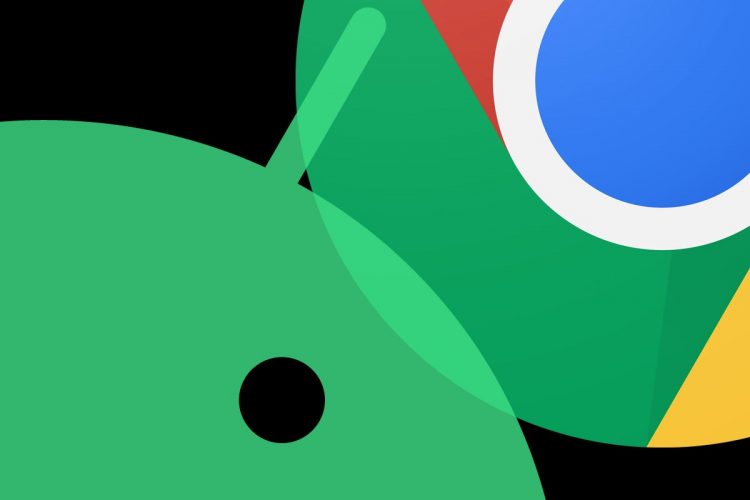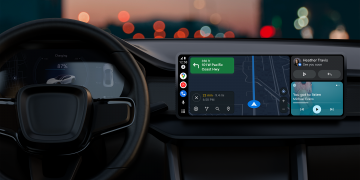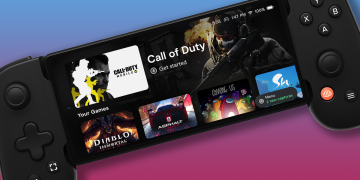Android and ChromeOS. ChromeOS and Android. Has there ever been a more enigmatic and question-creating couple in the mobile-tech universe?
From the get-go, Google’s two primary platforms have been the subject of endless scorn and speculation. Folks who don’t actually use a Chromebook and haven’t experienced ChromeOS since its earliest days have long been convinced that the platform serves no practical purpose and is destined for death. For ages, the popular narrative revolved around the notion that Google was gonna somehow “merge” the two into a single consolidated entity.
The real story, of course, turned out to be much more nuanced. For years now, Google’s been slowly but surely bringing its two platforms together and aligning them to make ’em more connected, consistent, and compatible. The goal, it seems, is less of a binary, one-or-the-other sort of decision and more of a best-of-both-worlds, dual-pronged path.
And now, it appears that road is about to take a noteworthy new turn — one that could seriously shake up a core part of the user experience on both sides of the Android-ChromeOS equation.
It all comes down to apps and how we discover ’em. And if some recent signs on Android and ChromeOS alike are any indication, things are about to get interesting.
The ChromeOS app challenge
Our story starts on the ChromeOS side of the mobile-tech divide. In the land o’ Chromebooks, for anyone paying attention, the question has shifted over time from a snide “What can you even do on those things?” to a far more intriguing “What can’t you do on ’em?”
To wit: Chromebooks today offer a full-fledged desktop-caliber web browsing environment. They let you install progressive web apps, Android apps, Linux apps, and even Windows apps, if you really want to get wild. You can use ’em as laptops, tablets, or anything in between. ChromeOS may have started out being about sheer simplicity as a defining feature, but it’s very much done a 180 and transformed itself into the “everything” platform.
In practice, that’s proven to be both a blessing and a curse. Chromebooks today are incredibly capable, as anyone who actually uses ’em can tell you, and they offer plenty of attractive advantages over more traditional desktop setups. But at the same time, all those possibilities have made it virtually impossible to know where to begin and what type of app to seek out for what purpose.
For one example, if you wanted to use the task management app Todoist on a Chromebook, you could:
- Open the Todoist website (or create a shortcut to that website on your desktop)
- Install the Todoist progressive web app from the Todoist website
- Install the Todoist Android app from the Google Play Store
- Install the Todoist Chrome extension from the Chrome Web Store
- Install the Todoist Linux app from the Linux Snap Store
- Install the Todoist Windows app from the Todoist website (provided you’ve got a company-connected Chromebook with Windows access available)
Head spinning yet? Mine sure is. It’s a ridiculous labyrinth for regular users to tackle, and even folks who might not explicitly realize all those options exist often find themselves facing vexing limitations when they install an app type that isn’t entirely optimal for their intended purpose.
Two years ago, I first reported on clues that revealed a slowly shaping-up strategy for fixing this flaw — what I referred to at the time as Google’s “grand ChromeOS plan.” The idea was almost painfully simple: Google would position the Play Store as not just a place for Android apps, as it’s traditionally been, but as a broader one-stop shop for multiple types of apps on Chromebooks — with the store itself determining which app type makes the most sense for any given purpose and then automatically installing the appropriate option for you.
We saw early signs of that plan popping up on Chromebooks around that time, and Google later confirmed to me in an interview that it was indeed working on such an effort. The goal, two ChromeOS execs told me, was to turn the Play Store into an all-purpose discovery tool where Chromebook owners could find whatever apps they needed — including even Linux apps, in certain circumstances — without having to think about the underlying technology.
Many months have passed since that unassuming start. But this summer, we’re seeing some tantalizing signs of progress that could propel the plan forward and lay the groundwork for a much more intuitive app-discovering experience on ChromeOS — and, the big twist: also on Android.
The Android-ChromeOS app connection
So here it is: You’d be forgiven for failing to notice, but in the ChromeOS 104 update that rolled out earlier this month, Google quietly added in the ability to find apps in the Play Store simply by searching in your Chromebook’s launcher — the freshly redesigned window that pops up when you tap your Chromebook’s Everything button (also known as the Search or Launcher key).
One tap, and boom: You can find and then install any app you need right there in the actual operating system, without having to figure out which source is appropriate and then open up and search through that specific storefront.

Simple. Streamlined. Consolidated. It’s such a sensible change, the only baffling thing is why it’s taken this long for it to happen.
To be sure, the work here is far from finished. The Play Store itself still needs to actually support and surface all those different app types intelligently, in a way that makes sense for the Chromebook environment. (As of now, that happens only with a very limited set of specific programs.) But now, at least, the foundation is coming into focus — and the idea of ChromeOS itself becoming the app discovery mechanism and eliminating the need to interact with any specific app store is starting to take shape.
Now for the really intriguing part: In Android 13 on its self-made Pixel phones, Google is also now experimenting with surfacing app results from the Play Store as part of the primary home screen search system — once again from right within the actual operating system. It’s the same basic concept, in other words, only translated into Android terms. And it, too, has the potential to lead to an even broader rethinking of what the Play Store represents and what an “Android app” even is.
When I first wrote about Google’s grand ChromeOS plan, I ended with a bit of an speculative “what if?”-style scenario. Go, go, Gadget Quoting Machine:
Consider this: Google’s been experimenting with the idea of progressive web apps on Android for a while now. The company already makes it possible for developers to embed such programs within traditional Android app structures and then put those into the Play Store. How far of a leap would it be to start offering up standalone progressive web apps directly in place of Android apps for phones, too, in circumstances where that’d be optimal?
I’ll tell you this: I have some standalone progressive web apps on my own phone, and … they’re surprisingly pleasant to use — in a way that almost makes you forget you aren’t using a regular, native Android app. Just sayin’.
Hmmmmmmmmmmmmm.
Once again, fascinating things are happening at the intersection of Google’s two primary platforms. And now, the inspiration is flowing freely in both directions — from Android to ChromeOS and from ChromeOS back to Android.
The only real question is how long it’ll take for this latest piece of the puzzle to fall into place — and how long it’ll take for the Android- and Chromebook-carrying masses to adapt to a whole new way of thinking about apps.
Want even more Googley knowledge? Sign up for my free weekly newsletter to get three things to know and three things to try in your inbox every Friday.
Copyright © 2022 IDG Communications, Inc.
Source by www.computerworld.com






























